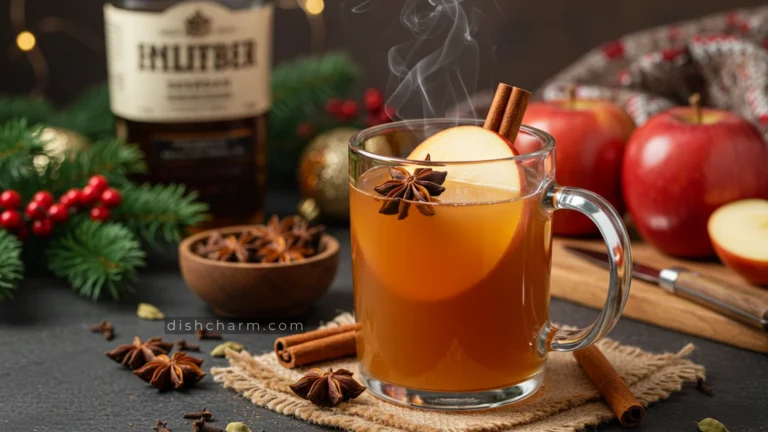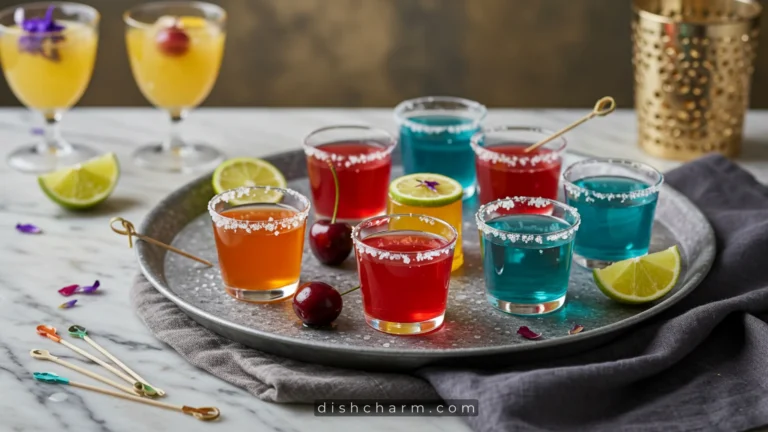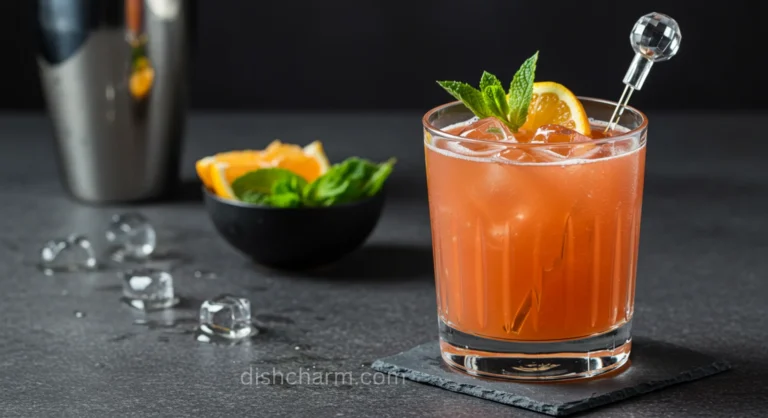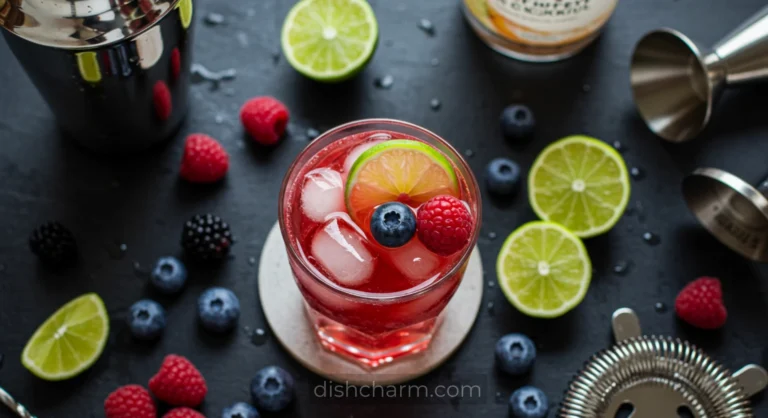Sazerac Cocktail Recipe: Master the Classic New Orleans Drink
The Sazerac cocktail stands as a timeless emblem of New Orleans’ rich cultural history and unique flavors. Born in the vibrant streets of New Orleans, this drink combines rye whiskey, bitters, sugar, and absinthe to create a bold yet balanced experience. Crafting a perfect Sazerac is an art that involves the right ingredients and an understanding of its distinctive components.

Rye whiskey serves as the core of the Sazerac, imparting a robust and spicy flavor. The drink’s character is further enhanced by the addition of Peychaud’s bitters, a critical ingredient that gives the Sazerac its signature edge. Absinthe plays a subtle yet crucial role in adding a layer of complexity and aroma.
When preparing a Sazerac, attention to detail is key. The choice of glassware and the technique used in mixing and serving the cocktail have a significant impact on the overall drinking experience. This combination of tradition and meticulous preparation is what makes the Sazerac a celebrated classic.
Key Takeaways
- A Sazerac balances rye whiskey, bitters, sugar, and absinthe.
- The choice of ingredients and preparation method are crucial.
- Tradition and technique define the Sazerac’s unique flavor.
History of the Sazerac
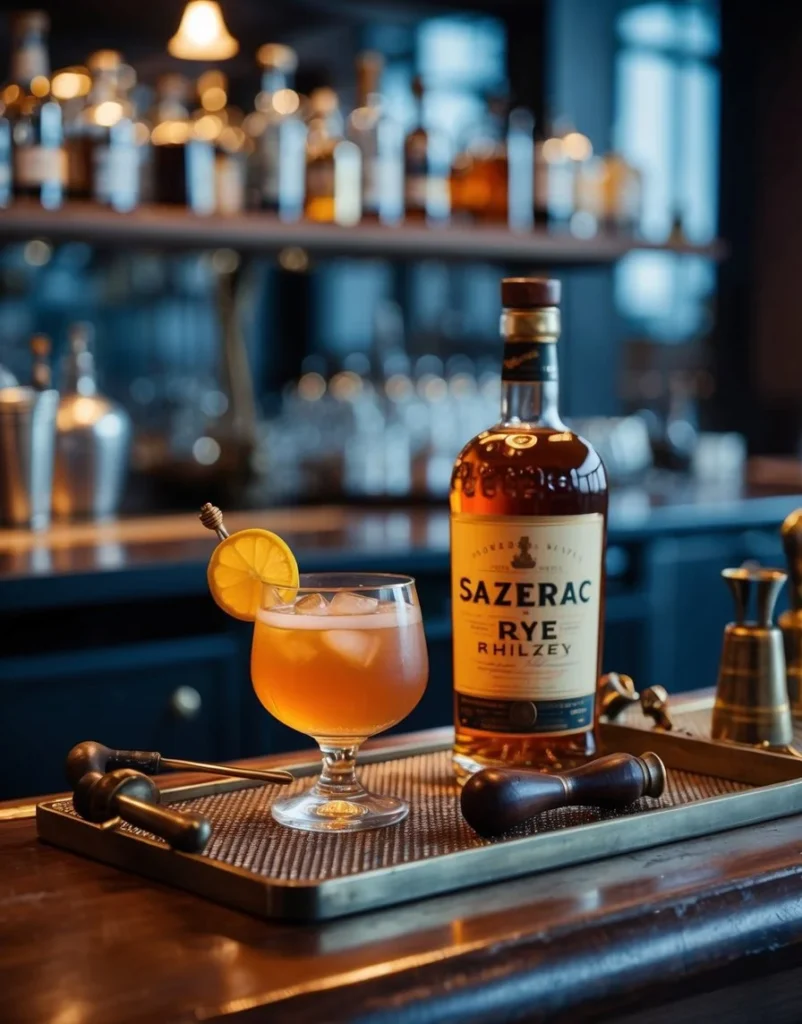
The Sazerac cocktail has deep roots in New Orleans culture and is known as the official cocktail of Louisiana. Its story is closely linked to the city itself, capturing the spirit and adventure of this historic place.
The origins of the Sazerac can be traced back to the 19th century. It was originally made with Sazerac de Forge et Fils brandy. Over time, rye whiskey replaced the brandy, adding a different character to the drink and reflecting shifts in popular tastes.
A key component of the Sazerac is the addition of an absinthe or Herbsaint rinse, which gives the cocktail its unique flavor. Bitters, sugar, and the chosen spirit combine to create a bold, balanced taste that has remained popular for generations.
Stanley Clisby Arthur’s 1938 book, “Famous New Orleans Drinks and How to Mix ‘Em,” is a significant source of information on the Sazerac’s development. It’s a testament to the cocktail’s continued relevance and enduring appeal in New Orleans and beyond.
Today, visitors can explore the history of the Sazerac at places like The Sazerac House in New Orleans. This attraction offers a deep dive into the city’s cocktail culture, featuring exhibits on the drink’s history and production techniques.
The Role of Rye Whiskey
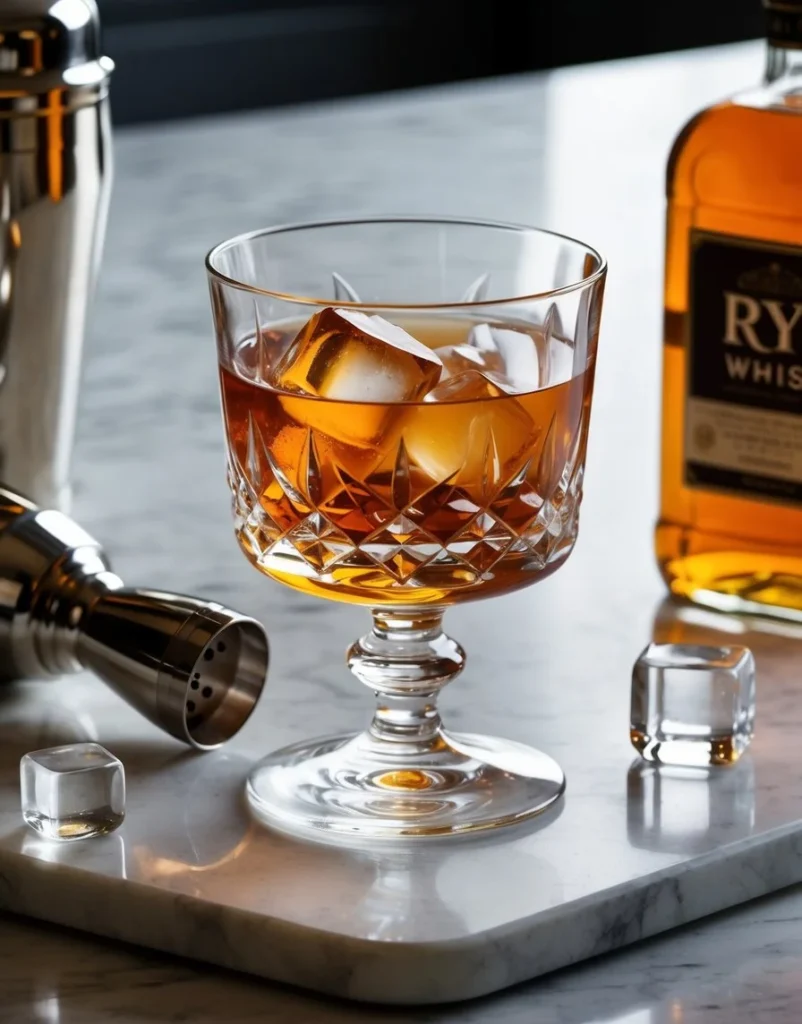
Rye whiskey plays a key part in the flavor profile of the Sazerac cocktail. With its bold and spicy notes, rye whiskey adds complexity and depth. This makes it a suitable choice for balancing other ingredients.
In the Sazerac, rye whiskey contrasts with the sweetness of the sugar cube. This creates a harmonious blend of flavors. The spice from the rye enhances the bitters and complements the herbal nuances of the absinthe.
The history of rye whiskey in the Sazerac is rooted in tradition. Originally, cognac was used in the cocktail, but rye whiskey became favored for its robust taste. This transition added a distinct American twist to the classic New Orleans drink.
Rye whiskey’s lower sugar content means it generally has a drier taste. This aspect is important in making sure the cocktail doesn’t become overly sweet. It strikes the perfect balance in the Sazerac.
Key Points:
- Flavor: Spicy, bold, and complex
- Balance: Complements sweet and bitter ingredients
- Tradition: Historically significant in cocktail evolution
Overall, rye whiskey ensures that the Sazerac remains a timeless beverage. Its unique qualities make the Sazerac a memorable and well-rounded drink.
Understanding Absinthe
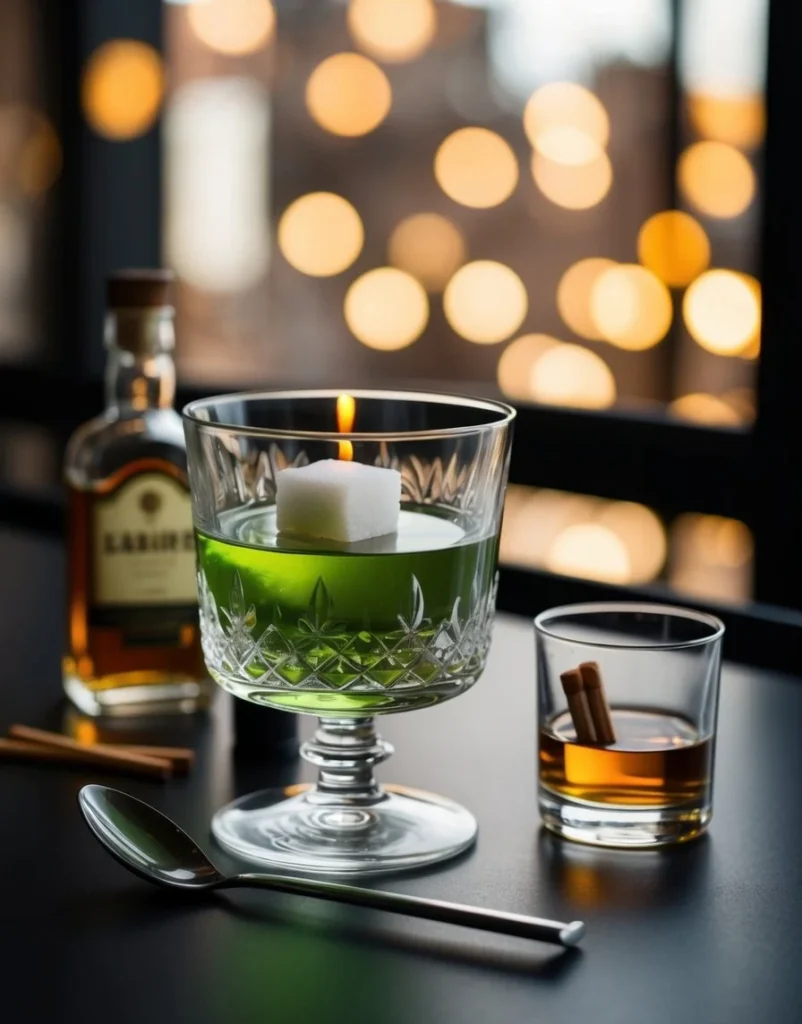
Absinthe is a crucial ingredient in a Sazerac cocktail, bringing unique flavor characteristics. It serves as both a flavor enhancer and offers versatility in preparation.
The Purpose of Absinthe in a Sazerac
Absinthe adds a distinct anise flavor to the Sazerac, which enhances its complexity. When mixed with ingredients like rye whiskey and Peychaud’s bitters, absinthe introduces herbal and spicy notes. It helps balance out the sweetness from sugar and the intensity of rye.
Rinsing the glass with absinthe allows for subtle flavor infusion without overwhelming other components. This method affects the aroma, giving the cocktail a unique fragrance. The result is a well-rounded drink with a layered taste experience.
Absinthe Alternatives
For those who might not have absinthe or would prefer a substitute, there are options available. Pernod and Herbsaint are popular alternatives, as they share similar anise and herbal flavors. These substitutes can replicate the signature taste that absinthe imparts to a Sazerac.
Another substitute is using pastis, which is a French liqueur with similar notes. Careful measurement is important when using alternatives, as their flavors can vary in intensity. By choosing the right substitute, the cocktail’s unique characteristics can be preserved without relying solely on traditional absinthe.
Importance of Peychaud’s Bitters
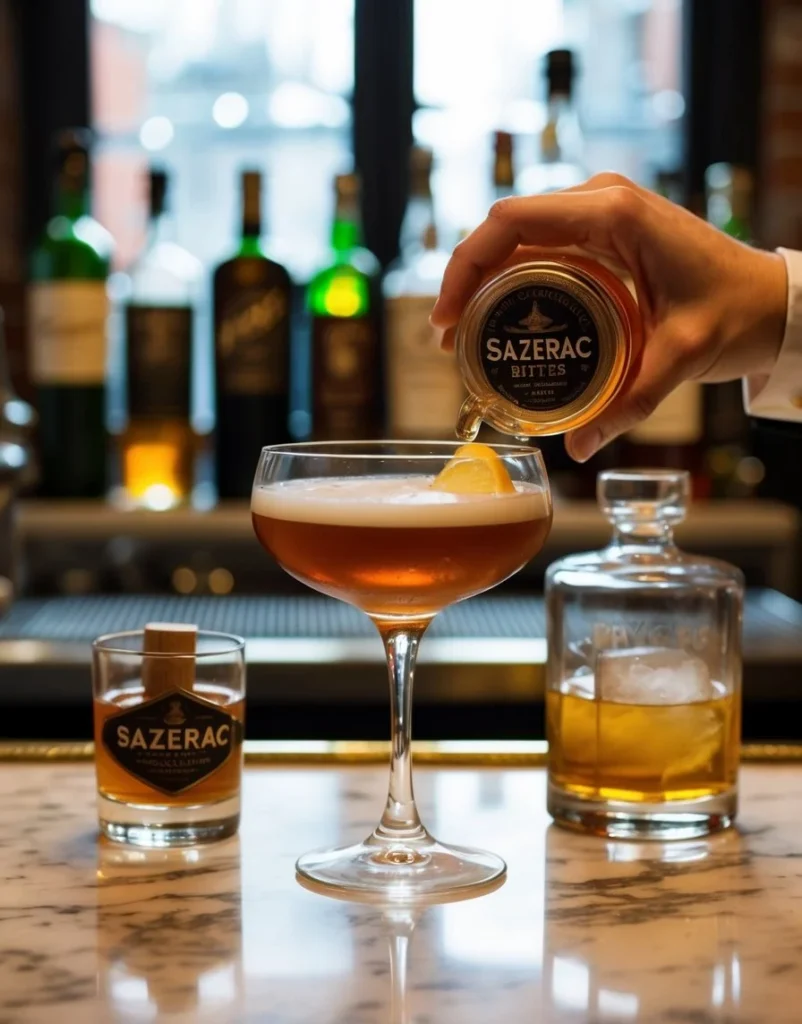
Peychaud’s Bitters are a key part of the Sazerac cocktail. Their unique flavor sets this drink apart from others. Created in the 1830s by Antoine Amédée Peychaud, they hold a special place in cocktail history.
These bitters add a light spice and herbal notes to the Sazerac. This taste complements the drink’s other ingredients, like cognac and absinthe. Without them, the Sazerac would lose its signature character.
Peychaud’s Bitters are often compared to Angostura bitters, but they have their own distinct strengths. They are especially associated with the birthplace of the Sazerac, New Orleans. This connection highlights their cultural significance.
Bartenders worldwide value Peychaud’s Bitters. They trust them to provide consistent quality and flavor. This reliability makes them a favorite choice in mixing classic cocktails. Furthermore, their role in the Sazerac showcases their historical and cultural importance in mixology.
Selecting the Right Glassware

Choosing the right glassware for a Sazerac cocktail is important for both presentation and taste. The recommended glass is an old-fashioned glass or a rocks glass. This type of glass complements the drink by capturing its aromas and flavors without the need for ice.
To maintain the drink’s perfect temperature, a chilled glass is key. Placing the glass in the freezer for about 15 minutes can help achieve the right chill. This step ensures the cocktail stays cool without being diluted by ice.
The shape of the glass also supports the preparation process. Its wide mouth allows easy stirring and muddling. Additionally, it facilitates the even coating of absinthe or Herbsaint, which is crucial for authentic flavor. Always remember to discard any excess liquid after rinsing.
As a finishing touch, a lemon peel garnish not only enhances the appearance but also adds a subtle citrus aroma. Using the right glassware can elevate the Sazerac drinking experience, making it both a visual and sensory delight.
The Sugar Component

The sugar used in a Sazerac cocktail plays a critical role in balancing its flavors. It provides a sweet counterpoint to the whiskey and bitters, ensuring a well-rounded drink.
Sugar Cube Vs. Simple Syrup
The use of a sugar cube is traditional in making a Sazerac cocktail. One sugar cube is typically muddled with a few dashes of bitters until it dissolves. This method helps release flavors from the bitters while maintaining the drink’s classic texture.
Alternatively, simple syrup can replace the sugar cube. It is a pre-dissolved mixture of sugar and water, making it quicker and easier to mix. Simple syrup provides uniform sweetness throughout the cocktail, ensuring each sip tastes the same. Deciding between a sugar cube and simple syrup often depends on preference and convenience.
Preparation Techniques

Mastering the preparation of a Sazerac involves a few key steps. Properly chilling the glass enhances the drinking experience, stirring the drink correctly blends the flavors, and expressing the lemon peel boosts its aroma.
Chilling the Glass
A well-chilled glass is crucial for serving the Sazerac. Start by placing ice cubes in the Old-Fashioned glass before you mix the drink. Allowing the ice to sit for several minutes ensures the glass reaches the desired temperature. This practice not only cools the drink when poured but also helps preserve its flavor. Pour the ice and any water that has formed out just before serving. Using a chilled glass elevates the overall drinking experience by keeping the cocktail at an ideal temperature.
Proper Stirring Methods
Stirring the Sazerac is essential to achieving the right balance of flavors. After combining the sugar, bitters, and whiskey, add ice to the mixture. Using a bar spoon, gently stir the ingredients for about 30 seconds. This ensures the drink is well-mixed without diluting it too much. Avoid shaking as it introduces air and changes the drink’s texture, which is not desirable for a Sazerac. The goal is a smooth, well-blended drink that retains the distinct flavors of rye whiskey and bitters.
Expressing the Lemon Peel
Expressing the lemon peel is a simple yet impactful step in the Sazerac preparation. Cut a small piece of lemon peel, making sure to avoid too much pith. Hold the peel over the glass, with the peel side facing the drink. Pinch the sides to release the oils from the peel into the surface of the cocktail. This adds a citrus aroma and a subtle hint of flavor, enhancing the overall experience. Remember to rub the peel along the rim of the glass for an extra burst of citrus with each sip.
Serving and Presentation

The Sazerac cocktail is best served in an Old-Fashioned glass. This choice highlights its classic roots and enhances the drinking experience.
Start by chilling the glass with ice. This keeps the drink cold and refreshing without over-dilution.
After preparing the cocktail, empty the ice from the glass.
Using a small amount of absinthe or pastis, rinse the inside of the glass. This subtle hint of flavor adds complexity to the drink.
Pour the mixed cocktail into the absinthe-rinsed glass.
Garnish the drink with a lemon peel.
Make sure to express the oils over the glass for a burst of citrus aroma.
Present the Sazerac with confidence, emphasizing its elegant simplicity.
The attention to detail in serving ensures that the cocktail is appreciated both visually and in taste.
Variations of the Sazerac

The Sazerac cocktail, with its deep connections to New Orleans, invites creative twists. Many variations explore different spirits and flavors and even cater to those avoiding alcohol.
Modern Takes on the Recipe
Modern twists on the Sazerac often involve substituting the base spirit to experiment with diverse tastes. Some bartenders replace rye whiskey or Cognac with bourbon, adding a sweet note to the cocktail. Another popular version uses brandy, enriching the drink with deep, fruity tones.
In some twists, bitters like Angostura are swapped out or combined with different regional options, like orange bitters, which introduce a fresh citrus aroma. The traditional absinthe rinse is sometimes replaced by other herbal liqueurs to change the aromatic notes, providing a unique taste experience.
These adaptations highlight the versatile nature of this timeless drink, enabling it to maintain its revered status while embracing contemporary flavors.
Non-Alcoholic Versions
For those who prefer non-alcoholic choices, the Sazerac can be reimagined while maintaining its signature essence. Instead of spirits, spirit-free whiskey alternatives mimic the original flavor, providing depth without alcohol. Herbal teas or syrups can replace absinthe to achieve similar herbal notes.
The use of spice blends like cinnamon or ginger restores warmth and complexity that bitter elements offer in the original. Incorporating sugar alternatives or flavored syrups allows further customization, retaining the cocktail’s distinct structure.
This flexibility helps those avoiding alcohol to still enjoy the texture and taste that make the Sazerac a classic choice.
Pairing Sazerac with Food
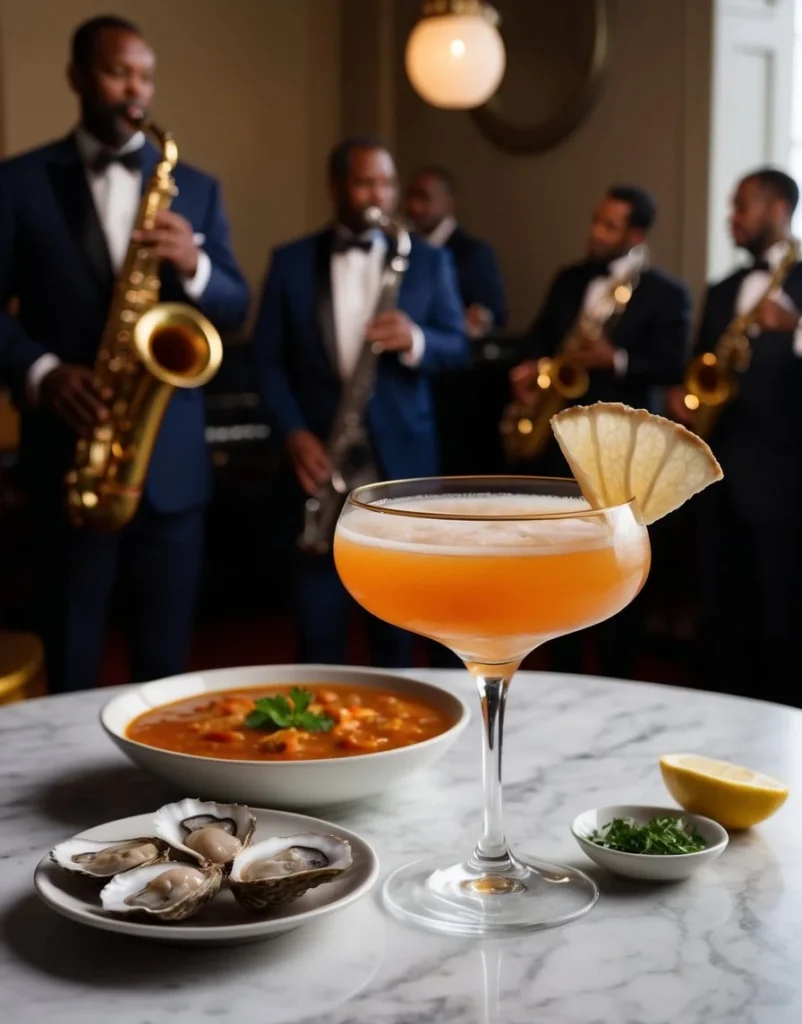
The Sazerac cocktail is a classic drink with complex flavors. Its bold, spicy notes and the hint of anise can enhance certain dishes. When selecting foods to pair with a Sazerac, consider flavors that will complement the drink.
Savory Dishes:
The cocktail pairs well with traditional New Orleans dishes like jambalaya and gumbo. These meals have bold, savory flavors that match the spices in the Sazerac. Other options include shrimp remoulade, which offers a nice contrast to the drink’s bitterness.
Charcuterie and Cheese:
A charcuterie board is an appealing choice. The mix of sweet and salty items, like cured meats and cheeses, works nicely with the cocktail’s bitterness. Blue cheese, with its strong taste, can balance out the cocktail’s powerful flavor.
Sweet Treats:
For dessert lovers, dark chocolate makes an excellent pairing. The rich, bittersweet taste of the chocolate can match the depth of the Sazerac. It’s a great option for those who enjoy savoring both sweet and bitter flavors together.
Always remember that pairing food with a Sazerac can heighten the overall dining experience, turning it into a delightful adventure for the senses.
The Sazerac in Popular Culture
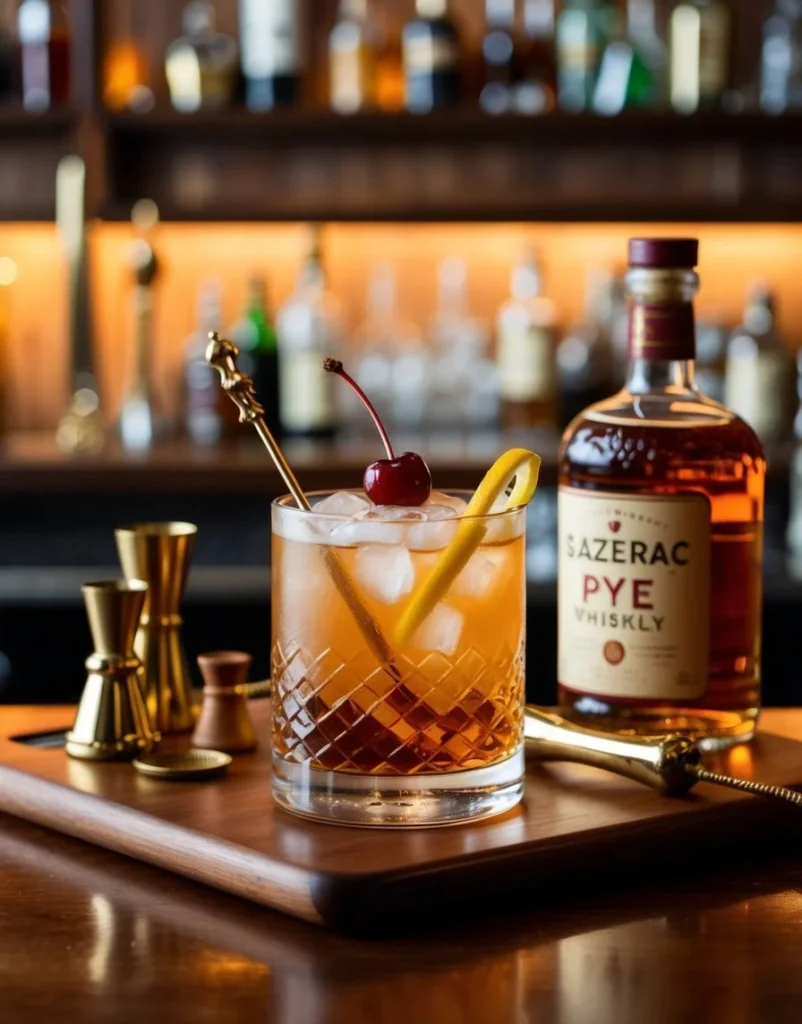
The Sazerac cocktail has become a symbol of New Orleans’ vibrant drinking culture. It is often featured in movies, TV shows, and books that highlight the city’s unique charm.
In literature, the Sazerac is sometimes mentioned in stories set in New Orleans. It adds authenticity to scenes and helps set the mood of the narrative.
Television and Movies:
- The Sazerac has made appearances in various TV series that explore Southern life.
- Films set in New Orleans often include scenes featuring this iconic drink.
Music
Songs paying homage to New Orleans sometimes mention the Sazerac. Its association with the city’s music scene is undeniable, as jazz and cocktails often go hand in hand.
Art and Photography
The Sazerac is also a popular subject in art, portrayed in paintings and photographs that capture the essence of New Orleans. Artists use it to evoke the classic and timeless feel of the city.
Its enduring presence in popular culture demonstrates the cocktail’s significance beyond just a drink. It stands as a cultural touchstone, embodying the spirit of New Orleans.
Frequently Asked Questions

The Sazerac cocktail is steeped in history and rich in tradition. Key details about its ingredients, preparation, and unique characteristics are essential for making this iconic drink.
What are the essential ingredients needed to make a classic Sazerac cocktail?
A classic Sazerac includes rye whiskey, sugar, Peychaud’s Bitters, absinthe, and a lemon peel. Each ingredient contributes to the cocktail’s distinct flavor, creating a balanced and flavorful drink that honors its New Orleans roots.
How does a Sazerac differ from an Old Fashioned in terms of preparation and taste?
Both cocktails are whiskey-forward, but the Sazerac is unique due to its use of absinthe and Peychaud’s Bitters. The preparation involves an absinthe-coated glass for aromatic depth, whereas the Old Fashioned typically utilizes orange and a cherry garnish.
Which type of whiskey is traditionally used in a Sazerac?
Rye whiskey is traditionally used in a Sazerac cocktail. It offers a spicier taste compared to bourbon, adding depth to the drink’s flavor profile and ensuring an authentic experience.
Can you recommend a substitute for absinthe when making a Sazerac cocktail?
Herbsaint or pastis can serve as alternatives to absinthe in a Sazerac. Both provide similar anise flavors that are necessary for maintaining the cocktail’s traditional taste while offering a milder option.
What is the significance of Peychaud’s Bitters to the authentic taste of a Sazerac?
Peychaud’s Bitters are a defining ingredient in the Sazerac. Their unique herbal and slightly sweet flavor complements the whiskey and enhances the overall taste, making them indispensable for authenticity.
How do you properly rinse a glass with absinthe for a Sazerac?
To rinse a glass with absinthe, pour a small amount into the glass. Swirl it around, ensuring the absinthe coats the entire interior. Finally, discard the excess. This process imparts a subtle aroma and flavor to the cocktail.
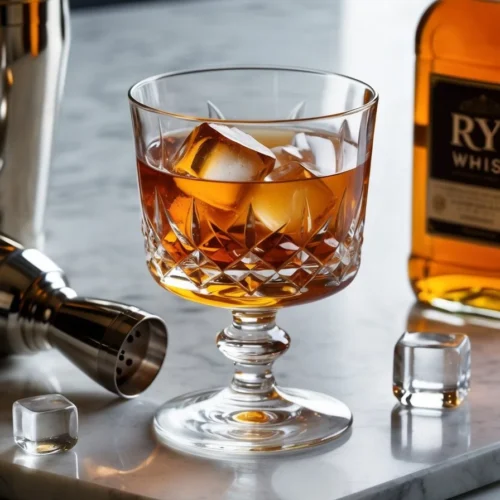
Sazerac Cocktail Recipe
Equipment
- 1 Mixing glass For combining ingredients.
- 1 Bar spoon For stirring the cocktail smoothly.
- 1 Julep strainer To strain the drink into the serving glass.
- 1 Rocks glass For serving the cocktail.
- 1 Citrus peeler or zester For creating the lemon twist garnish.
- 1 Ice For chilling the drink.
Ingredients
- 2 oz Rye whiskey The base spirit; choose a high-quality rye for best results.
- 1/4 oz Simple syrup Adds sweetness; can substitute with 1/4 tsp sugar dissolved in water.
- 2 dashes Peychaud's bitters Essential for the Sazerac’s signature flavor.
- 1 dash Angostura bitters Adds depth and complexity.
- 1/4 oz Absinthe For rinsing the glass; adds an anise-forward aroma.
- 1 twist Lemon peel For garnish and aroma.
Instructions
Step-by-Step Recipe
Prepare the Glass:
- Rinse a rocks glass with absinthe by swirling a small amount around the interior. Discard any excess absinthe and set the glass aside.
Mix Ingredients:
- In a mixing glass, combine rye whiskey, simple syrup, Peychaud’s bitters, and Angostura bitters.
Chill the Cocktail:
- Fill the mixing glass with ice and stir gently for 20–30 seconds until the mixture is well-chilled.
Strain into Glass:
- Strain the chilled cocktail into the absinthe-rinsed rocks glass.
Garnish:
- Twist a strip of lemon peel over the drink to express its oils, then place it in the glass as a garnish.
Serve:
- Serve immediately and enjoy responsibly.
Notes
-
- Substitutions: Use bourbon instead of rye whiskey for a sweeter profile. Substitute simple syrup with honey syrup for a richer taste.
- Storage: This cocktail is best served fresh and does not store well.
- Tips: Chill the rocks glass beforehand for an extra-cold drink.
Frequently Asked Questions
-
Can I use bourbon instead of rye whiskey?
- Yes! Bourbon offers a sweeter, fuller-bodied flavor compared to rye.
-
What if I don’t have absinthe?
- Substitute with pastis or another anise-flavored liqueur for a similar effect.
-
How do I make simple syrup?
- Combine equal parts sugar and water in a saucepan. Heat until the sugar dissolves, then cool before use.
-
Why is Peychaud’s bitters essential?
- Peychaud’s bitters provide the Sazerac’s signature fruity, anise-like flavor that distinguishes it from other cocktails.
-
Can I make this drink ahead of time?
- While you can mix the ingredients in advance, it’s best to chill and serve immediately for optimal flavor.
Tips & Tricks
- Flavor Enhancement: Express the lemon peel directly over the drink to release its oils, adding brightness to the aroma.
- Presentation: Serve in a chilled glass for a professional touch.
- Variations: Experiment with different bitters, such as orange bitters, for a unique twist.
Plating and Garnishing
- Garnish: Use a lemon twist for a pop of color and aroma.
- Serving Style: Serve in a rocks glass with no additional adornments for a clean, classic presentation.
- Accompaniments: Pair with light appetizers like cheese plates or charcuterie for a complete experience.



